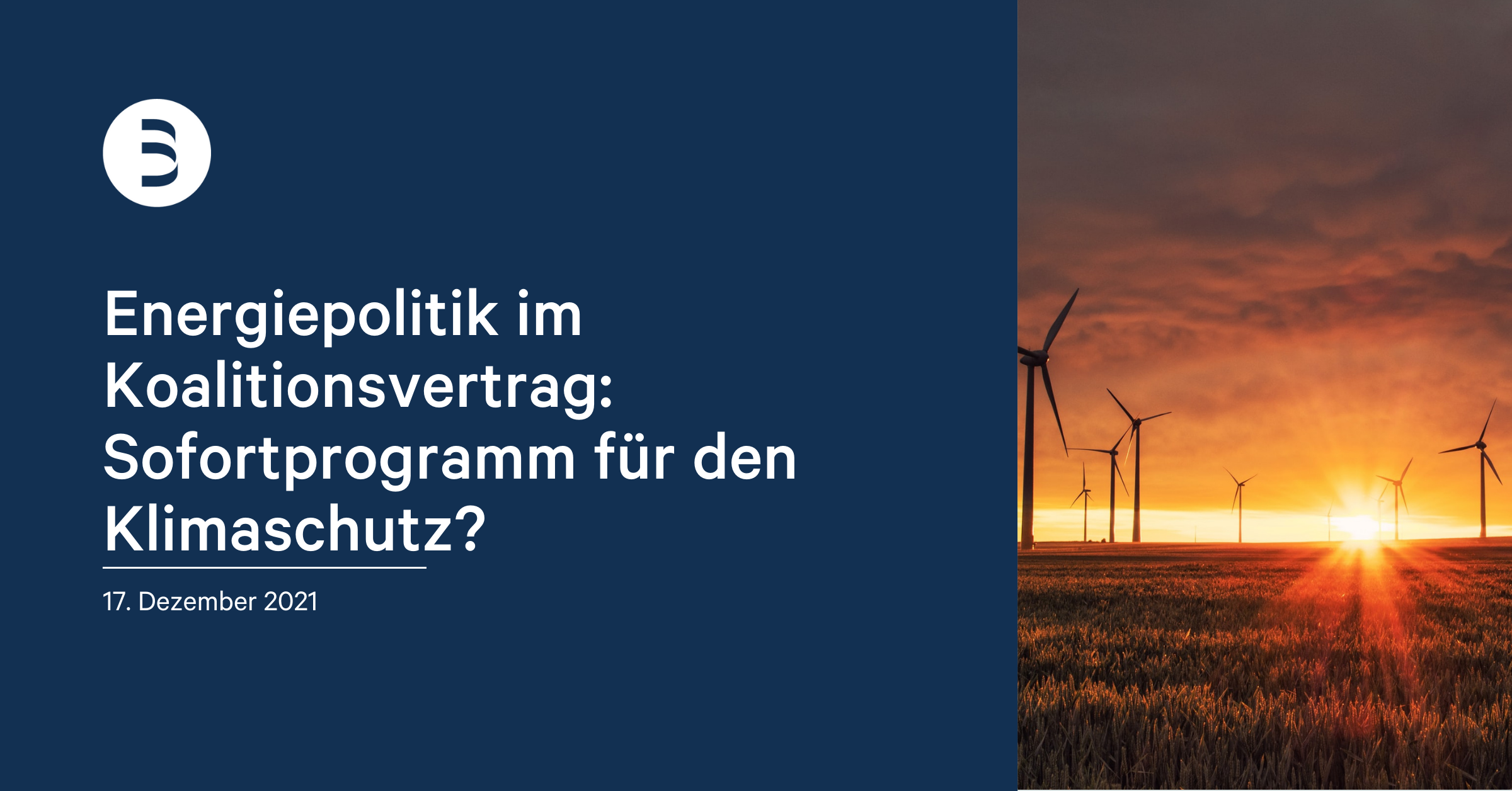
Although the new German government has officially been in office for just over a week, it will take until next year before it begins to implement its coalition agreement into law. In the first year of the new legislative period, key energy policy projects of the traffic light coalition will have to be passed into law in order to achieve the ambitious goals. For some measures, the coalition partners have even set a specific time frame.
For political advocacy, this is both an opportunity and a challenge: The ambitious timetable means that lawmakers are even more dependent on external expertise when it comes to drafting legislation. On the other hand, the enormous time pressure increases the risk that the consequences of a regulation will not be weighed with the necessary care and that impracticable requirements will be adopted.
The urgency for the federal government stems from three factors:
- The government has already set specific deadlines for the implementation of individual energy policy measures in the coalition agreement.
- Other objectives are associated with a considerable lead time and must therefore be initiated in a timely manner.
- The impact of energy policy measures on climate policy targets will only be measurable with a considerable time lag. So the sooner the new government can demonstrate success, the better its chances of re-election in 2025.
So what can we expect in the first year under the traffic light coalition? First of all, the government and especially the Federal Ministry of Economic Affairs and Climate Protection will have to prioritize which measures to initiate first. Based on the three influencing factors mentioned above, these include the following projects in particular:
- Action program to accelerate the expansion of renewable energies.
The coalition agreement stipulates that as early as the first half of 2022, “all necessary measures” will be initiated to help accelerate the expansion of renewables. Specifically, it mentions, among other things, the “provision of the necessary land” on which free-standing solar plants and wind turbines can be built. Against the backdrop of higher expansion targets in the photovoltaic sector (“approx. 200 GW by 2030”) and the ambitious goal of designating two percent of the country’s land for wind energy, it is essential to establish the necessary regulatory foundation in a timely manner. In addition to the issue of financing, the central challenges remain the necessary grid expansion and the resolution of conflicting goals such as that between wind power expansion and nature conservation. In addition, the German government plans to make concrete proposals in the coming year for the establishment of a “Climate-Neutral Electricity System Platform,” a stakeholder platform that will develop a new electricity market design.
- Revision of the Renewable Energy Sources Act (EEG)
The traffic light coalition partners have anchored the political consensus to abolish the EEG levy in the coalition agreement and want to transfer it to financing from the federal budget by January 1, 2023. To this end, respective amendments must be made to the Renewable Energy Sources Act. This creates the opportunity to use the legislative process to make further adjustments to the EEG. It is quite possible that an amendment to the EEG will also be passed as part of the above-mentioned immediate package of measures.
- Roadmap for the ramp-up of the hydrogen economy.
In addition to accelerating the expansion of renewables, the German government continues to focus on hydrogen as a climate-neutral successor to fossil fuels. By 2030, Germany is to “become the lead market for hydrogen technologies.” According to the coalition agreement, the primary goal is a rapid market ramp-up. Due to the expected long lead time for the technical implementation of the hydrogen infrastructure, the corresponding regulatory foundations must be laid in a timely manner. This also includes the question of how the German government will define a “technology-open design of hydrogen regulation,” i.e., which production methods will be envisaged in addition to electrolysis. It has already been agreed that the government’s Hydrogen Strategy will be “updated” in the coming year.
- Regulatory framework for the expansion of modern gas-fired power plants
Against the backdrop of the phase-out of nuclear energy and coal-fired power generation, the coalition government has agreed to build new gas-fired power plants. These are to accompany the expansion of renewables and meet the rising demand for electricity and energy “at competitive prices.” Recent studies assume that the currently planned capacities will have to be increased tenfold by 2030. To future-proof the power plants and avoid malinvestments, the plants should be created H2-ready, i.e. ready for the use of hydrogen. However, commissioning a gas-fired power plant requires a certain lead time, which will take several years even if planning and approval procedures are made less bureaucratic. Therefore, the federal government must clarify in a timely manner at which locations the power plants will be built, how investment incentives will be set, and how “H2-ready” will be defined.
The new Federal Minister Robert Habeck and the traffic light coalition will therefore already have a lot to do in their first year in government if they want to be able to meet their targets in a key policy area and lay the foundations for the rest of the legislative period. But there will already be debates when it comes to prioritizing the measures. Political advocacy must therefore start early and not hope that the coalition agreement will simply be implemented as is from now on.